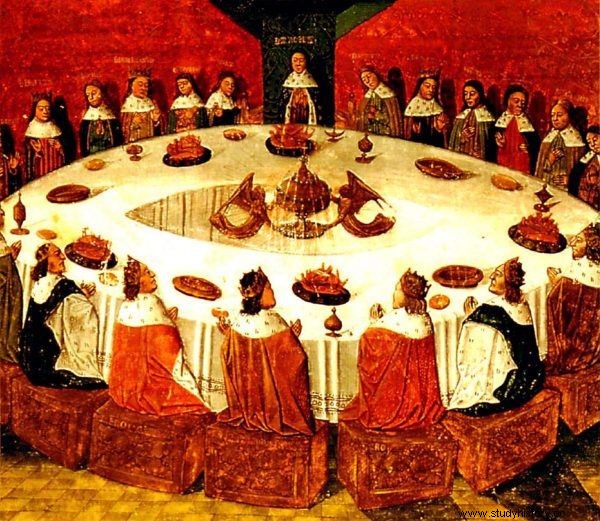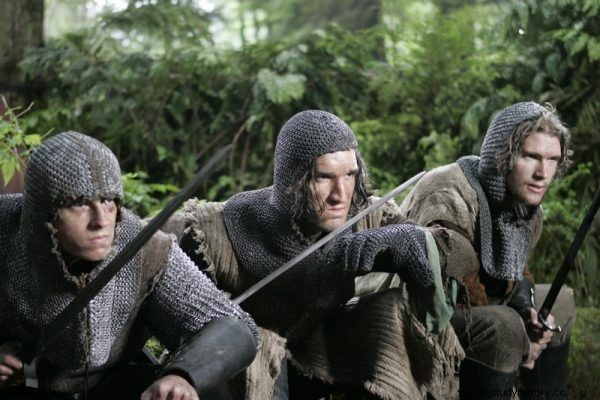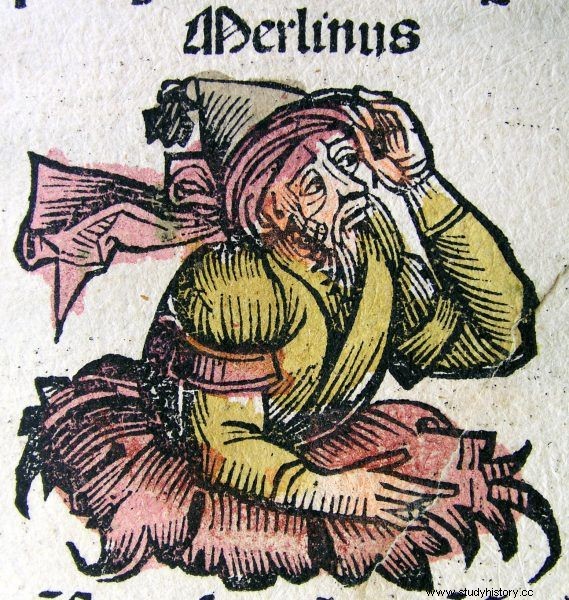The legendary wizard Merlin, helping Arthur, had his historical prototype. However, the saintly chronicler had to hide the truth so as not to offend the readers!
Who hasn't heard of King Arthur? The hero of countless legends, ruler of Camelot and leader of the Knights of the Round Table, he has lived to see countless books, movies and games. And the king was advised by the no less meritorious sorcerer Merlin. According to one medieval story, it was thanks to him that the aforementioned Round Table was created.
Its shape was to resemble the whole world from which Christian knights came to Arthur and to which the king sent them (for example, in search of the Holy Grail). Besides, the shape of the table guaranteed that every seat next to it was equal - none of the knights could exalt themselves above the others, and no one was at the exit. This is the wisdom of medieval Merlin!
However, if it is to impress our proud nation - "which had representative and democratic structures already in the 13th and 14th centuries" and "was a source of democracy for all of Europe" (let us quote a classic) - it would be worthwhile for Merlin to confirm somehow its historicity.

According to medieval legends, it was thanks to the sorcerer Merlin that the famous Round Table was created, at which the legendary King Arthur sat with his knights (source:public domain).
Various researchers have been trying for years to associate King Arthur with a specific figure. For example, with a mysterious leader from one thousand five hundred years ago who - at a time when Britain ceased to be a Roman province - united the Britons to stop the barbarian invasion of the Angles and Saxons. Maybe this is a clue? What about Merlin, was he also alive then? It turns out that it did have its historical prototype. However, this true identity of the wizard has been disguised by ... censorship.
Sacrifice to dragons
As pointed out by the outstanding medievalist Jacques Le Goff, researchers have long drawn the attention of researchers to the resemblance of Merlin to a certain Ambrosius, who in the "History of the British" (around 830) of the monk Nennius foretold his compatriots the future. This Ambrosius undoubtedly alluded to the figure of the leader Ambrosius Aurelianus, known from the chronicle of Gildas from the 5th century. After the fall of the Western Roman Empire, this leader resisted the barbarian invasions of Britain.

This article was inspired by the CBS series "Merlin's Apprentice".
This hero must have been heard by the 12th century Welsh chronicler and bishop Geoffrey of Monmouth, who "created" Merlin for our culture by writing "Merlin's Prophecies" (1134), "The History of the Kings of Britain" (1138) and "The Life of Merlin" (1138) . He placed his wizard in the Ambrosius era known from the Gildas chronicle, and at the same time borrowed elements of his fabulous biography from the work of Nennius.
For example, the fact that was almost a sacrifice as a child . His blood was to sanctify a stronghold that was constantly collapsing. Endowed with miraculous powers, however, the boy escaped death, pointing out that dragons, dozing in the lake under the fortress, were responsible for the constant disasters.

Merlin or Ambrosius? Illustration by Howard Pyle for the book "King Arthur and the Tales of the Round Table" (1903) (source:public domain).
So why did Geoffrey of Monmouth give his hero a different name? Because even more than Ambrosius, he was inspired by yet another character that was discussed in the British Isles!
Forest weirdo or something more?
In the 10th, 11th centuries and later, in the vast Celtic lands (Scotland, Ireland, Wales, Cornwall) there were tales of youthful deeds of heroes, which in Welsh were called mabinogion - we read in "Tales of the Round Table" by French literary historian Jacques Boulenger. It is in these orally transmitted folk tales that many of the heroes of Arthurian legends appeared for the first time.
In Wales, among the circulating mabinogion the popularity of the figure of Myrrdin Wyllt, among others. He lived in the 6th century (and therefore slightly later than Ambrosius Aurelianus). He was the bard of King Gwenddolau, or a PR specialist at the time , taking care of the perpetuation and dissemination of the best image of the ruler in songs.

Or was Myrddin, the bard of King Gwenddolau, the prototype of the sorcerer Merlin? Illustrated by Merlin in the Nuremberg Chronicles (source:public domain).
After a bloody battle during the war in Britain and the death of his patron, Myrrdin decided to flee to the forest. He lived among animals, in the treetops. He gained the fame of a fortune teller by predicting his own, quite bizarre, death. For he knew that he would die three times:he would fall, break through and drown. It sounded absurd, but it did come true:Wyllt, beaten by his enemies, fell from the escarpment straight onto a stake beside the river, and then sank into its depths.
The proximity of the forces of nature, Myrrdin's prophetic abilities and contacts with the rulers of divided Britain - all this made him an excellent prototype for the wizard's figure , created in the 12th century by Geoffrey of Monmouth. But why did the author change his name?

The article was inspired by the CBS series "Merlin's Apprentice".
And here we come to the heart of the mystery - as it turns out, badly smelling.
Bullshit
Geoffrey of Monmouth created his works for the then aristocracy in the Islands - Norman, using the French language. These readers, pronouncing the name Myrddin in a manner that sounds like "merdin", would involuntarily associate it with the French word "merde". Meaning excrement, or bluntly speaking "shit"!
It was no better with the Latin form, the association was identical. Of course, Geoffrey of Monmouth, a chronicler and clergyman, could not afford such a thing. One that it would be distasteful, two - just ridiculous. And he did not create his works for jokes, he wanted to convey essential facts and values through them, everything was to be guided by Christian morality.

King Arthur was supposed to live in Castle Camelot with his wife Guinevere and his adviser - Merlin. Illustration by Gustave Doré (source:public domain).
So the next time we see Merlin played by Sam Neill on the CBS series Merlin's Apprentice, remember that he has a hapless man somewhere under his skin whose name was too politically incorrect for medieval courts.
And his story itself - a royal propagandist who turned into a forest freak and predicted his own brutal death - is unfortunately not as beautiful and instructive as Arthurian legends. Because, as Fr. Tischner, there are three truths:true truth, truth too, and bullshit.
***
Arthurian times constantly stimulate the imagination of lovers of tales of brave knights, fair ladies, honor, love and betrayal. In legends, the figure of the wise King Arthur, the brave Lancelot or the beautiful Guinevere is overshadowed by only one person - the mythical wizard Merlin. It appears periodically in books, movies and series, despite (or maybe precisely because) that its existence is difficult to confirm historically ...
